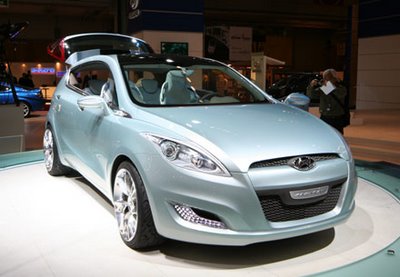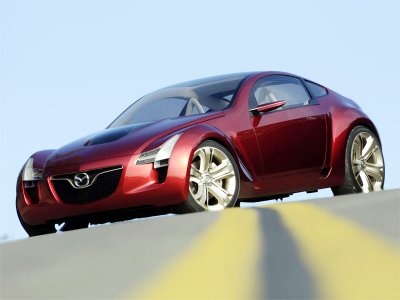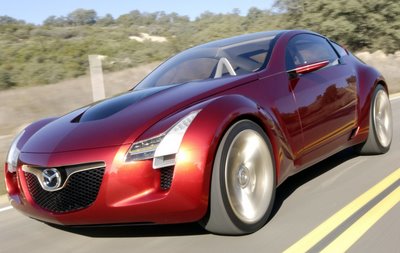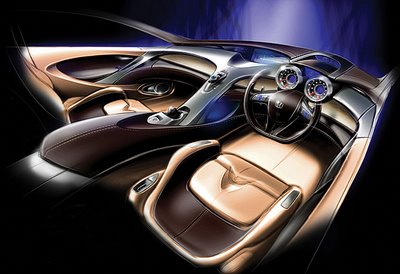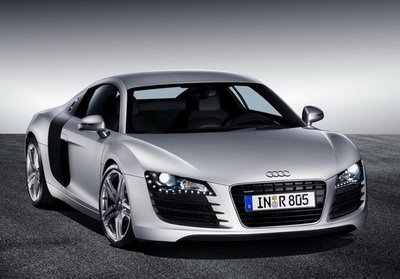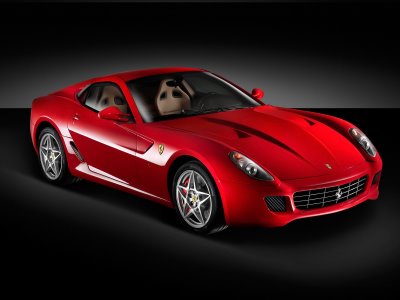BMW 3 Series : Automobile of the Year : 2006 / Automobile Magazine
Monday, October 16, 2006
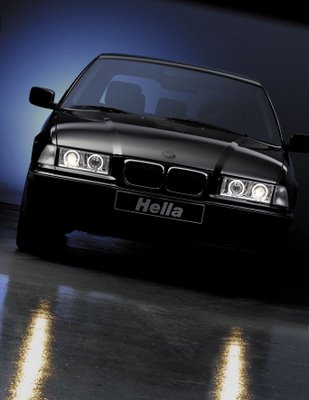
BMW 3 Series
The BMW 3 Series is an entry-level luxury car / compact executive car manufactured by BMW since May 1975. It was the successor to the 2002 coupe, retaining much of that car's styling while adding a more powerful 2.0 L 110 hp (82 kW) engine and other performance enhancements. The 3 Series was for some time the smallest car line manufactured by BMW, although that place was in 2004 taken by the BMW 1 Series. The 3 series is BMW's best selling automobile, accounting for nearly 40% of all automobiles sold by the company in 2005.
BMW 3 Series / Social and marketing significance
From its sporting origins, the 3 Series became a formal range that was sometimes synonymous with the "yuppie" generation in 1975 Being an accessible prestige-badge car, the 3 Series' reputation grew at this time. By the early 21st century, the E46 3 Series, designed by American Chris Bangle, was the best-selling car of its size in the world, as commonplace in Asia and America as in Europe, while maintaining its prestigious image.
BMW 3 Series / History
Like most of BMW's contemporary models, the 3 Series name has been applied to many different vehicles. The 1998 3 Series is marketed similarly to the 1999 3 Series, but the two share few mechanical components and are styled quite differently.
3 Series vehicles can be largely differentiated by the underlying platform:
BMW E21 - (1975–1983) 3 Series
BMW E30 - (1984–1991) 3 Series
BMW E36 - (1992–1998) 3 Series
BMW E46 - (1999–2005) 3 Series
BMW E90 - (2006–XXXX) 3 Series Sedan
BMW E91 - (2006-XXXX) 3 Series Wagon
BMW E92 - (2007-XXXX) 3 Series Coupé
BMW E93 - (2008-XXXX) 3 Series Convertible
BMW 3 Series / E21
The E21 line was produced from May 2, 1975 (1977 in the USA) through 1983. Originally a replacement for the 2002 coupe, the first 3-Series was a 2-door model only. The New Class sedans would be replaced by the 5 Series. A factory authorised cabrio version was built by Baur.
Models:
Europe
1981-1983 315 - 1.6 L M41 I4, 75 hp (55 kW)
1975-1979 316 - 1.6 L M41 I4, 90 hp (66 kW)
1980-1983 316 - 1.8 L M10B18 I4, 90 hp (67 kW)
1975-1980 318 - 1.8 L M42 I4, 98 hp (72 kW)
1975-1977 320 - 2.0 L M64 I4, 109 hp (80 kW)
1977-1983 320i - 2.0 L M20B20 I6, 125 hp (92 kW)
1978-1983 323i - 2.3 L M20B23 I6, 143 hp (105 kW)
Rest of world
1976-1979 320i - 2.0 L M43/1 I4, 110 hp (82 kW)
1980-1983 320i - 1.8 L M42 I4, 100 hp (75 kW)
BMW 3 Series / E30
The E30 was sold from 1982 through 1991, (through 1993 in Convertible form). The E30's introductory price of US$18,210 was nearly double that of the E21 just 7 years earlier, but the availability of a six cylinder engine and 4-door body style (in 1984) earned sales. The torquey "eta" six in the 325e produced 121 hp (90 kW), but met the strict emission standards of the time. The E30 was the most powerful compact BMW offered in the United States since the 2002 Tii.
The lineup was joined in 1985 by the high-output 325i and 325is. Though the engine displacement was reduced to 2.5 L, output was up to 168 hp (125 kW) as the company focused on performance rather than economy. The rev limit for the new motor was raised from 5000 rpm to 6500 rpm, as a shorter stroke was employed with the new motor.
An all wheel drive version, the 325ix, joined the lineup for 1986. The four-cylinder 318 was dropped in 1985, but was brought back with a new, 1.8L DOHC motor (M42B18) for 1991.
In 1989, BMW introduced the touring version of the E30. It was very popular during its production up to 1994. It was available with a 1.6, 1.8, 2.0 or 2.5 liter engine. The 325i touring was also available with 4WD.
The most powerful American BMW E30 in 1989 came in the form of the M3. It used a 192 hp (143 kW) S14 straight-4 with a 4-valve head adapted from the M88 six and Bosch fuel injection.
Models:
Europe
1982-1987 316 - 1.6 L M98 I4, 90 hp (66 kW)
1982-1990 316 1.8 - 1.8 L M10B18 I4, 90 hp (66 kW)
1987-1991 316i - 1.6 L M40B18 I4, 102 hp (75 kW)
1982-1987 318i - 1.8 L M10B18 I4, 105 hp (77 kW)
1987-1991 318i - 1.8 L M40B18 I4, 115 hp (85 kW)
1989-1991 318is - 1.8 L M42B18 I4, 140 hp (103 kW)
1982-1985 320i - 2.0 L M20B20 I6, 125 hp (92 kW)
1985-1991 320i - 2.0 L M20B20 I6, 129 hp (95 kW)
1988-1990 320is - 2.0 L S14 I4, 192 hp (141 kW)
1982-1986 323i - 2.3 L M20B23 I6, 150 hp (110 kW)
1985-1991 325i - 2.5 L M20B25 I6, 170 hp (125 kW)
1986-1991 325iX - 2.5 L M20B25 I6, 170 hp (125 kW)
1986-1988 M3 - 2.3 L S14 I4, 200 hp (147 kW)
1989-1991 M3 Evo - 2.3 L S14 I4, 215 hp (158 kW)
1985-1991 324d - 2.4 L M21 I6, 86 hp (63 kW)
1987-1991 324td - 2.4 L M21 I6, 115 hp (85 kW)
Other markets
1984-1985 318i - 1.8 L M10B18 I4, 101 hp (75 kW) - North America
1991 318iS - 1.8 L M42B18 I4, 134 hp (100 kW) - North America
1984-1991 325e - 2.7 L M20B27 I6, 121 hp (90 kW) - North America
1986-1991 325es - 2.7 L M20B27 I6, 121 hp (90 kW) - North America
1987-1991 325i/is - 2.5 L M20B25 I6, 168 hp (125 kW) - North America
1988-1991 325ix - 2.5 L M20B25 I6, 168 hp (125 kW) - North America
1988-1991 M3 - 2.3 L S14 I4, 192 hp (143 kW) - North America
1984-1990 333i - 3.2 L M30 I6, 197 hp (145 kW) - South Africa
BMW 3 Series/ E36
Also known as the "Dolphin shape." The E36 was sold from 1991 through 1998 . It employed the "Z-axle" multilink suspension in the rear which had been proven in the Z1. DOHC engines were used across the range, with VANOS variable valve timing introduced in 1993.
The four-door E36 was sold from Fall, 1991, in the United States but the E30 coupes were retained until well into 1992. The E36 convertible was delayed until 1994. The hatchback 318ti Compact was introduced in 1995, was very popular in Europe, but it was not very successful in North America. The BMW Compact was identical to the regular E36 sedan from front bumper to A-Pillar. Everything else was unique, namely it's rear semi-trailing arm suspension, based off the old E30, instead of the Z-Axle Multilink employed in all other E36's. The Z3 and M Coupe have similar rear suspension setups as well. The "Touring" station wagon was sold in Europe from 1995, but was not offered in the United States.
The 2.5 L M50B25 used in the 325 models was replaced in 1996 with the 2.8 L M52B28, creating the 328 line. Another 2.5 L engine, the M52B25, was reintroduced for 1998 but the cars were sold as 323 rather than 325.
The 4-door 3 Series models were replaced after 1998 in the US, while the 2-door models lasted through 1999.
Models:
Europe
1991-1994 316i - 1.6 L M40B18 I4, 102 hp (76 kW)
1995-1999 316i - 1.6 L M43B16 I4, 102 hp (76 kW)
1991-1999 318i - 1.8 L M40B18 I4, 115 hp (86 kW)
1995-2000 318iS/ti - 1.9 L M44B19 I4, 140 hp (104 kW)
1991-1995 320 - 2.0 L M50B25 I6, 150 hp (112 kW)
1992-1997 M3 - 3.0 L S50B30 I6
1993-1997 323 - 2.4 L M50B24 I6
1994-1999 320 - 2.0 L M52B20 I6
1994-1999 324 - 2.4 L M52B24 I6
1995-2000 325 - 2.5 L M52B25 I6
1995-2000 328 - 2.8 L M52B28 I6
1995-2000 M3 - 3.2 L S50B32 I6
US
1992-1995 318iS/318ti - 1.8 L M42B18 I4, 134 hp (100 kW)
1992-1995 325 - 2.5 L M50B25 I6, 189 hp (125 kW)
1995 M3 - 3.0 L S50B30US I6
1996-1999 M3 - 3.2 L S52B32 I6
1996-1998 328 - 2.8 L M52B28 I6, 190 hp (142 kW)
1996-1999 318 - 1.9 L M44B19 I4, 138 hp (103 kW)
1998 323 - 2.5 L M52B25 I6, 168 hp (125 kW)
BMW 3 Series / E46
The E46 chassis began to replace the E36 specification for 1998. Only the 4-door sedans were updated that year. The E36 coupé and touring models lasted one more year until the E46 replacements arrived for model year 2000. The 2.8 L cars were called 328 while 2.5 L cars got the confusing 323 name. The new M54 engines appeared for 2001; with the new 3.0 L 330 replacing the 328, BMW renamed the 2.5 L car the 325. Also in 2001, the compact 3-door version appeared on the european market, but it was replaced in 2004 by the 1 series. During the second half of 2005 the E46 sedan and touring were phased out in favour of the new E90. The E46 coupé and convertible remain in production well into 2006.
Models:
Europe and other markets
1998-2001 316i - 1.9 L, 105 hp (77 kW)
2001-2005 316i - 1.8 L N42B18, 116 hp (87 kW)
1998-2001 318i - 1.9 L, 118 hp (87 kW)
2001-2005 318i - 2.0 L N42B20, 143 hp (105 kW)
2005-2006 318Ci - 2.0 L N42B20, 150 hp (110 kW)
1998-2002 320i - 2.0 L M52B20 T, 150 hp (110 kW)
2000-2006 320i - 2.2 L M54B22, 170 hp (125 kW)
1998-2001 323i - 2.5 L M52B25 T, 170 hp (125 kW)
1998-2001 328i - 2.8 L M52B28 T, 193 hp (142 kW)
2000-2006 325i - 2.5 L M54B25, 192 PS
2000-2006 330i - 3.0 L M54B30, 231 PS
2000-2003 M3 - 3.2 L S54B32, 343 PS
US
1999-2001 323i - 2.5 L M52B25 T, 170 hp (127 kW)
1999-2001 328i - 2.8 L M52B28 T, 193 hp (144 kW)
2001-2005 325i - 2.5 L M54B25, 184 hp (137 kW)
2001-2005 330i - 3.0 L M54B30, 225 hp (168 kW)
2001-2005 M3 - 3.2 L S54B32, 333 hp (248 kW)
Diesel models:
1998-2001 320d - 1951 cc, 136 hp (100 kW)
2002-2006 320d - 1995 cc, 150 hp (110 kW)
2002-2003 330d - 2926 cc, 184 hp (135 kW)
2004-2006 330d - 2926 cc, 204 hp (150 kW)
BMW 3 Series / E90
The E90 began production in May 2005 as a 2006 model. Currently, four engine options are offered, two being part of the new 'N' series of BMW inline engines featuring a lightweight magnesium/aluminum construction and technological innovations such as individual cylinder throttles, steplessly variable valve timing, and dual stage intake timing. The 3-Series is manufactured in Regensburg, Munich, and Leipzig, Germany while only the coupe, convertible, and some sedans are manufactured in Regensburg. The E91 touring model has also been available since fall 2005 along with 4WD models 325xi, 330xi and 330xd. The E92 2-door will come out in September of 2006 along with BMW's new N54 twin-turbo engine.
As of 2006, the E90 outsells both the Ford Mondeo and Vauxhall Vectra in the United Kingdom, according to official SMMT figures.
Models:
2005- 318i - 2.0 L gasoline inline-four, 129 hp (95 kW)
2005- 318d - 2.0 L diesel inline-four, 122 hp (90 kW)
2005- 320i - 2.0 L gasoline inline-four, 150 hp (110 kW)
2006 320si - 2.0 L gasoline inline-four, 173 hp (126 kW). Limited production (2600 units worldwide).
2005- 320d - 2.0 L diesel inline-four, 163 hp (120 kW)
2006- 323i - 2.5 L (Canada), gasoline inline-six, 174 hp (128 kW)
2006- 325i - 2.5 L (Europe)/3.0 L (North America), gasoline inline-six, 218 hp (160 kW)
2006- 325xi - 3.0 L (North America), gasoline inline-six, 218 hp (160 kW)
2006- 330i - 3.0 L gasoline inline-six, 258 hp (190 kW)
2006- 325d - 3.0 L diesel inline-six, 197 hp
2006- 330d - 3.0 L diesel inline-six, 231 hp (170 kW)
2006- 335d - 3.0 L twin-turbo diesel inline-six, 286 hp
2007- 328i coupe - 3.0 L gasoline inline-six, 230 hp (172 kW) (407 N·m)
2007- 328xi coupe - 3.0 L gasoline inline-six, 230 hp (172 kW) (407 N·m)
2007- 335i coupe - 3.0 L twin-turbo gasoline inline-six, 300 hp (224 kW) and 300 ft·lbf
2008- M3 coupe and sedan
BMW will reportedly produce a metal-topped coupé convertible model of the 3 series (E93) rather than the traditional cloth-top convertible. This model will be introduced in 2007. BMW will reportedly produce the E90 M3 in sedan form.
Note: In the US, the 325i and 330i are both powered by the same 3.0 L N52 engine, but the 330i features revised engine software and improved intake and exhaust systems to produce an additional 40 hp (255 vs. 215). Canada also gets a 323i model which has a detuned 2.5 L gasoline-injected inline-six producing 177 hp (130 kW).
BMW 3 Series/ Awards
The 3 Series has been on Car and Driver magazine's annual Ten Best list 15 times, from 1992 through 2005, making it the second-most common entry on that list. The E90 was named "Best New Sports Sedan" in the 2006 Canadian Car of the Year awards. Also, it was awarded the World Car of the Year at the New York Auto Show in April. British television show Top Gear, named the new 3 Series the "Ugliest car of the year" in 2005. Other nominees were: the Ssangyong Kyron, the Ssangyong Rodius and the Ssangyong Musso
BMW 3 Series/ Racing
The 3-Series is the car that won Andy Priaulx and BMW Team GB the World Touring Car Championship in 2005. This is a highly advertised achievement of BMW. The WTCC is in the 'Big Three' FIA championships (along with Formula One and the World Rally Championship). The 3-Series' rear-wheel drive layout and its proven dynamics have both been attirbuted to its victory, though in Touring Car Racing, as in NASCAR and almost every other motor sport, much of the skill is with the driver and their team tactics.
The BMW 3-Series is currently used in both the SCCA Pro Racing Speed World Challenge Touring Car Series and the Grand American Road Racing Series. In the Speed Touring Car Series, BMW is currently fourth on the manufacturer's championship standings as of September 24, 2006. In Grand Am, BMW is in third in the Grand Sport class.
Source: http://en.wikipedia.org



